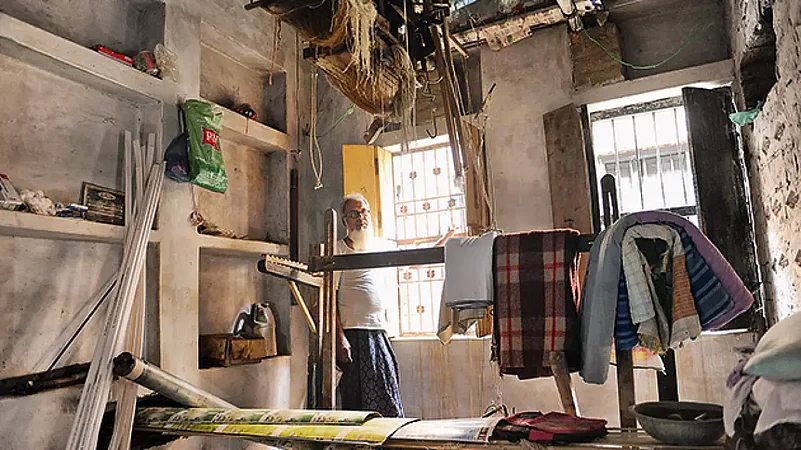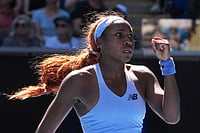Uttar Pradesh has been the epicentre of art and literature of the Hindi-speaking world. It has produced several litterateurs in Hindi and Urdu, including the likes of Premchand, Jaishankar Prasad and Firaq Gorakhpuri. Those who were born and lived here, and breathed in its socio-political atmosphere, depicted these in their poetry, short stories and novels. Over the last decades, the most significant change in these parts is migration. This doesn’t just apply to UP, but almost all states. A big section of youth who were born there has moved to Delhi. It’s not a new phenomenon, though. Even before Independence, most people from UP and Bihar would go to Calcutta in search of employment. After some time, Bombay (Mumbai) emerged as the most alluring destination to people looking for a livelihood. Today, it is Delhi that has acquired the distinction of the city that attracts hundreds and thousands of people—not just for their bread and butter, but also for education and politics.
Even though UP itself has some good old seats of learning, like Allahabad University, Banaras Hindu University and Aligarh Muslim University, they no longer have the charm they once held. Those who want to get a better education or a foothold in politics make a beeline for Delhi. Hundreds of Hindi and Urdu poets and writers from UP have landed up in the capital for better prospects. Living here, they have been removed from the everyday realities of the land they write about. How can they portray its social milieu in the way writers like Rahi Masoom Raza did, if they are not experiencing or observing the rhythm of life there? For writing to be rooted in the soil, it is important that the writer gets himself immersed in the throb of its culture. But in reality, the migration of writers from UP to the metros—one could call it a brain drain—has ensured that there are few left in the state who can carry on this tradition.
While there is a proliferation of publications in Hindi, Urdu writers often complain about the lack of publishers for their books. Often, they are forced to spend their own money to get their books out. There was a time when cities like Lucknow and Allahabad used to be the hubs of Urdu publishers. Allahabad’s Nikhat Publications used to be quite well-known, largely because it would publish novels of Ibn-e-Safi. There is nothing left in Lucknow or Allahabad—most of their publishers have folded up. Today, Urdu writers too have to get their works published from Delhi. But even here, things are not too great. Often, writers submit their manuscripts to government institutions with the hope of getting some financial aid, and in the process, get published. Some Urdu writers also look to Hindi publishers, as Urdu readers are few and far between. Since Hindi is a compulsory language, it continues to have a large readership.

That doesn’t mean there are few Urdu writers left; quite the contrary. In Lucknow for instance, new writers are exploring all genres of writing. But they all struggle to get published. Even beyond publishing, there was once a vibrant mushaira and nashist (soiree) scene that nurtured a demand for skilful writers. While nashists are rarely organised these days, mushairas continue to be held, though standards have fallen. To make things worse, there are few magazines and newspapers in Urdu that have managed to withstand the ravages of changing times. Newspapers like Siasat and Qaumi Awaz are still running, but their readership has shrunk considerably. Till the last quarter of the 20th century, there were so many Urdu magazines, like Shabkhoon (founded by Shamsur Rahman Faruqi in Allahabad), Shayar (published from Bombay), Biswin Sadi (originally published from Lahore, continued from Delhi post-Independence). Today, they are all gone.
ALSO READ: Paradox And Dilemma Of UP's Hindi Literati
Our cultural indoctrination begins in our homes and neighbourhoods, from where we pick up behaviour, mannerisms and dialects. Today, even our homes are devoid of a sense of culture. As for literature, though it is linked to every aspect of our lives, including society and politics, its effect on us is not immediate, but reveals itself indirectly, over the longue durée. One also mustn’t overlook literature’s connection with journalism. During the freedom movement, writers invariably came from a journalistic background. Through their writing, they encouraged a consciousness for freedom.

In the post-Independence era, writers and journalists who participated in the Jayaprakash Narayan-led movement during the Emergency, also made waves, to the extent that Baba Nagarjun even braved incarceration for several months. The political condition of the last few years has led to a lot of contemplation and analysis by writers and journalists. But these writings—essays, poetry and stories—have missed the tempo and tenor that these conditions warrant. The few disparate incidents of resistance can’t be called revolutionary. Maybe something remarkable is on the cards in the future. But for now, based on the prolific writing that has emerged over the last two years—mostly on the pandemic, proving yet again that literature mirrors life—one will be hard-pressed to find a single poem or story that stands out and is worthy of being remembered. Perhaps that is because immediate reactions are rarely effective, that writers need a critical distance from events in order to reflect upon them. Today, whatever is happening in Uttar Pradesh or for that matter across the country, may find proper appraisal in literary works a decade later. One can hope that those works will be of lasting value.
For my novel based on the lives of weavers in Varanasi, Jhini Jhini Bini Chadariya (1986), which is often cited as a groundbreaking work, I spent about 10 years with them—observing them, absorbing their lives. The fertile ground of Varanasi has produced several writers before me, including Premchand and Jaishankar Prasad. But perhaps they overlooked the conditions of weavers or didn’t know their lives intimately enough. But these caught my attention because I lived among them. I didn’t look at them through the eyes of an outsider, but as an insider. The poor condition of weavers is one of the many intractable issues the people of this state are grappling with, but if the writers are not living there, how will they portray them in their works? They can only draw from the surroundings. There are many shades of life in the state, each more complex than the other. What goes into a literary work depends on what catches a writer’s fancy.
Today, living in Delhi, if I attempt to write a novel set in Varanasi or Allahabad (Prayagraj), perhaps I may not be able to depict their socio-political conditions that well, as things have changed a lot. Even the lives of weavers, their problems and priorities, have changed. If I were to go and live among them, the novel that I would end up writing would be very different from Jhini Jhini..., as the conditions have changed. Like me, there are too many writers from UP who no longer live there. Most of those who are still there belong to the older generation—who could not leave the state for some reason or another. For instance, Kashinath Singh still lives in Varanasi even after retiring from BHU. But he has hardly written anything of late. After a particular age, our creative output either loses fervour or stops altogether.
ALSO READ: The Decline Of Urdu In UP's Literary World
Under these circumstances, hope hinges on the younger generation. But they too are flocking to cities like Delhi from their places of birth, where they spent their impressionable years. Today, Delhi is home to many such youngsters. If they become writers, they will only write about life around them and not what they have left behind. As for today’s brand of politics, it may eventually find its way to literature, but it will take some time. In these changed circumstances, the consolation is that nobody seeks votes in the name of making Urdu the second language. Neither do they make false promises of appointing Urdu teachers in government schools.
When communalism reared its head in UP, a lot of stories and novels were written. Even the demolition of Babri Masjid triggered writers. Shivmurti’s Trishul (2018), for instance, revolved around the atmosphere of hate, insecurity and fear. Similarly, the Godhra train burning and subsequent Gujarat riots in 2002 spawned literary works. But none of them were milestones that deftly tackled these themes, bringing to life the world they portrayed. Unless a literary work shakes our sensitivities and descends deep into the psyche and consciousness of the people it portrays, it will not touch a chord with us.
(This appeared in the print edition as "And Quiet Flows the Yamuna")
(Views expressed are personal)
ALSO READ
Abdul Bismillah is a Hindi writer known for his short stories of life in rural Muslim communities





















